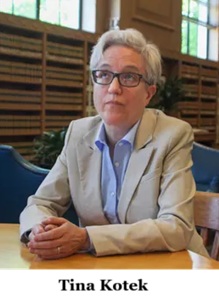Low-income protection from shut-off masks the need for rate increases
Oregon Governor Tina Kotek signed
HB 3792, which will double the existing size of Oregon's Oregon Energy Assistance Program (OEAP) from $20 million to $40 million. Governor Kotek claims this increase to OEAP will help low-income Oregonians by providing financial assistance to prevent shut-offs of their residential electricity service. But does it?
While the OEAP may have doubled the amount available to assist low-income families, the bill also doubles the maximum payment a low-income household or business would pay from $500 to $1000.
The increase to the OEAP will come from customer rates, which are limited to 2.5% without legislative approval, and the maximum payment amount may also be changed if it exceeds the 2.5%.
John A. Charles Jr., President and CEO of Cascade Policy Institute, stated in testimony, “HB 3792 will make most ratepayers worse off by taxing them to increase funding for the OEAP.” He suggested an offset by reducing the Renewable Portfolio Standard (RPS) that is scheduled to increase “clean energy” purchases by 25% in 2025. The cost to ratepayers for PGE’s 2025 forecasts costs $74.7 million, a surcharge of 3.4%. The total estimated cost, 2013-2025 is $565.8 million. Further, in 2021 the legislature required that PGE and PacifiCorp completely decarbonize their systems by 2040, which the RPS is now redundant. This single act would more than double the OEAP and still make all ratepayers better off.
With all the flexibility to the HB 3792, it seems misleading for the Governor to say this bill will help low-income Oregonians. In fact, it does the opposite by allowing an increase in the maximum low-income families pay out, plus participating in rate increases. The Governor’s press release states: “Under HB 3792, the average residential ratepayer’s bill will increase approximately .70 cents per month and large industrial users will pay a maximum amount of $1,000 per month, up from a current cap of $500 per month. In addition to doubling the existing OEAP capacity, these additional ratepayer charges for residential ratepayers will be indexed each year to help keep up with inflation.”
HB 3792 actually states: Section 1 (d) [The commissioner shall] “Ensure that no customer pays more than [$500] $1,000 per month per customer site for low-income electric bill payment and crisis assistance.” It is not limited to large industrial users. Besides raising the maximum, those receiving assistance will still pay rate increases to fund the program. Further, there is no ties to an index to keep up with inflation as claimed, which is another rate increase if it does exist.
Over the last four years, low-income Oregon ratepayers have faced dramatic spikes in their residential electricity bills. During 2024 there were nearly 58,000 residential shut-offs in Oregon among PGE and Pacific Power customers – the highest number on record. It is debatable whether raising the customer payout amount to $1,000 will protect customers from shut-off or increase the number that can’t pay their bill.
A D V E R T I S E M E N T

A D V E R T I S E M E N T
Rep. Tom Andersen (D - South Salem), chief sponsor of HB 3792 said: “Disconnections should not be a collection mechanism for our most at-risk Oregonians.” If HB 3792 was intended to give added protection from disconnection, it does not add to what ORS 757.698 already says: “In consultation with electric companies, investigate and may implement alternative delivery models to effectively reduce service disconnections and related costs to customers and electric companies”.
“Our Oregon Energy Assistance Program has a proven track that we should all embrace. By doubling the amount available under this program, HB 3792 will likely cut the number of annual shut-offs in half. Many single income families with babies or young children face significant risks when their electricity is cut off,” said Representative Mark Gamba, (D – Milwaukie), a co-sponsor of the bill.
HB 3792 will double the amount of funds available for Community Action Agencies to distribute funds and help prevent disconnection of residential electricity services. What that means to ratepayers can only mean a rate increase.
--Donna Bleiler| Post Date: 2025-07-27 22:45:35 | Last Update: 2025-07-27 23:53:53 |







